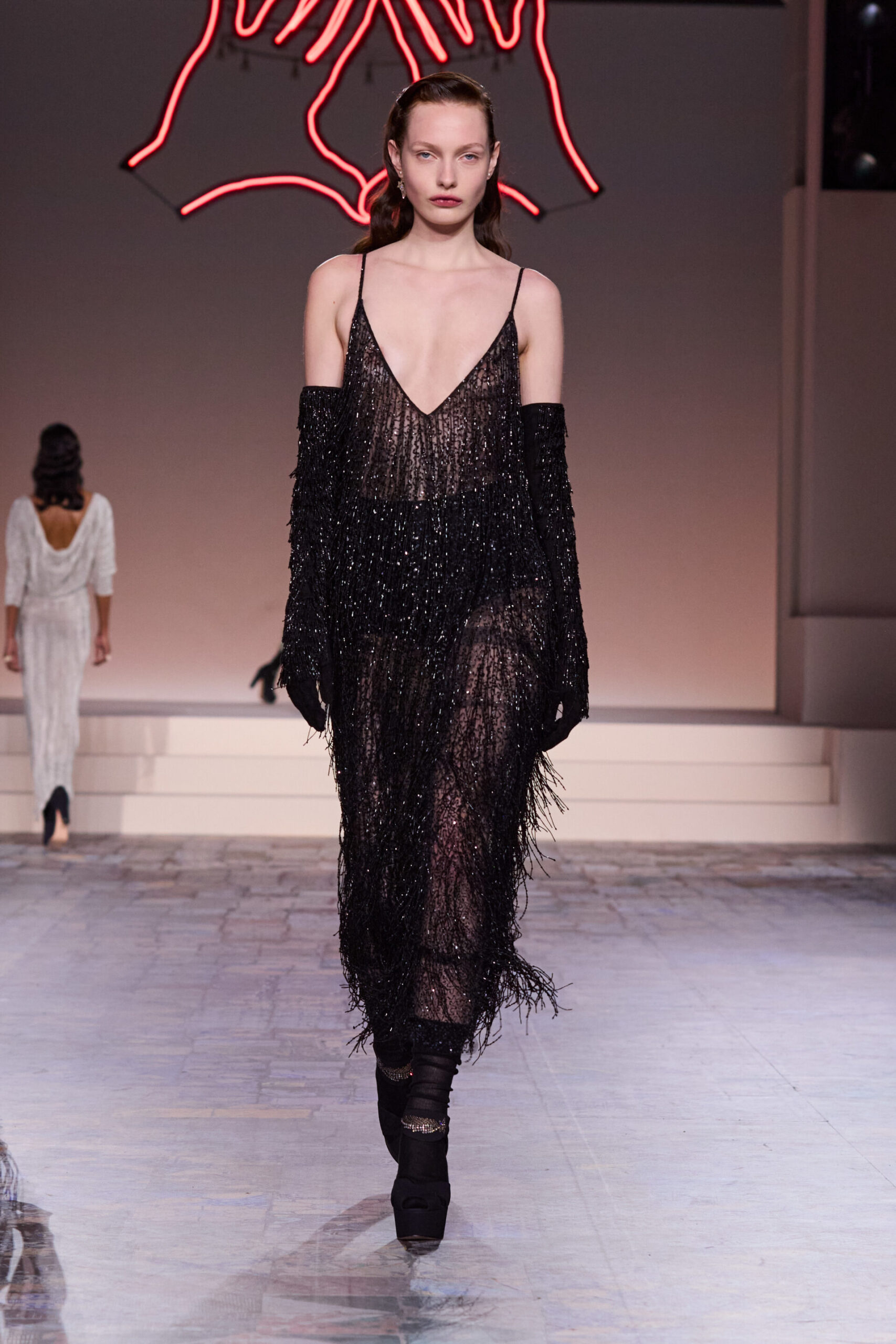Ciao! Manhattan: Grazia Chiuri takes Dior to America

Dior’s pre-fall 2024 collection, shown in New York on the 16th of April, is a continuation of Maria Grazia Chiuri’s fascination with all things America, a country that first captivated her when she was 18 years old.
A trench coat draped over the shoulders of a two-piece relaxed suit references the balance of street and casual that is true for both the Atlantic and Pacific coasts (bicoastal, if you will) as well as having the distinctly ‘American Look’ of sportswear. This was introduced with “realistic lifestyle applications” such as interchangeable trouser and shirt separates and the ‘popover’ dress, which was originally made popular by American stalwarts Claire McCardell, Bonnie Cashin, Geoffrey Beene and Calvin Klein.
Playing with American motifs, New York skyscrapers are printed across shirts, skirts, tunic dresses, and parka hems. Vertical forms are further probed in a cropped shearling-lined leather jacket, which recalls America’s female pilots Amelia Earhart, Amy Johnson, and, of course, Katharine Hepburn in Dorothy Arzner’s 1933 film Christopher Strong.
Actress Marlene Dietrich, who left her native Germany to pursue a career in Hollywood, serves as Chiuri's main muse. The double-breasted ‘Le Smoking’ style jacket in Zibeline silk, which was paired with a short beaded and fringed dress and followed by a longer sleeve applique and fringed dress, evokes Dietrich's early performances at Weimar niteries, just as it summons Marc Bohan’s designs for Dior’s Autumn/Winter 1965–66 collection. It was during this period that Dietrich insisted on a contractual clause that made Christian Dior her sole designer— the house would fit her for Alfred Hitchcock’s Stage Fright (1950). Later looks recall the Jean Louis gowns that Dietrich wore in the 1960s. (Dietrich worked into her 70s, performing in pristine blonde wigs and beaded and fringed dresses.)
While Chiuri’s decision to celebrate Dietrich’s provocation aligns with her broader approach as design director to debate ideas over hemlines and explore female empowerment, it can be challenging to find relevance in Dietrich's inclusion. True, Dietrich embodied a mysterious androgyny and has been revered as a queer icon—her appearance in full evening tuxedo in Josef von Sternberg’s pre-code Morocco (1930) was replicated at the show's finale. However, with Dietrich’s passing 32 years ago and a history of her look being adopted by Madonna (particularly her Blonde Ambition tour), Gwen Stefani, and informing countless Vanity Fair shoots, it feels as though Chiuri may have overlooked the validity of this proposition.
High Relief at Valentino L’École Spring/Summer 2024
By Grace Sandles
Come on baby, light my fire CELINE Haute Parfumerie’s New Candle Collection
By To Be Team










